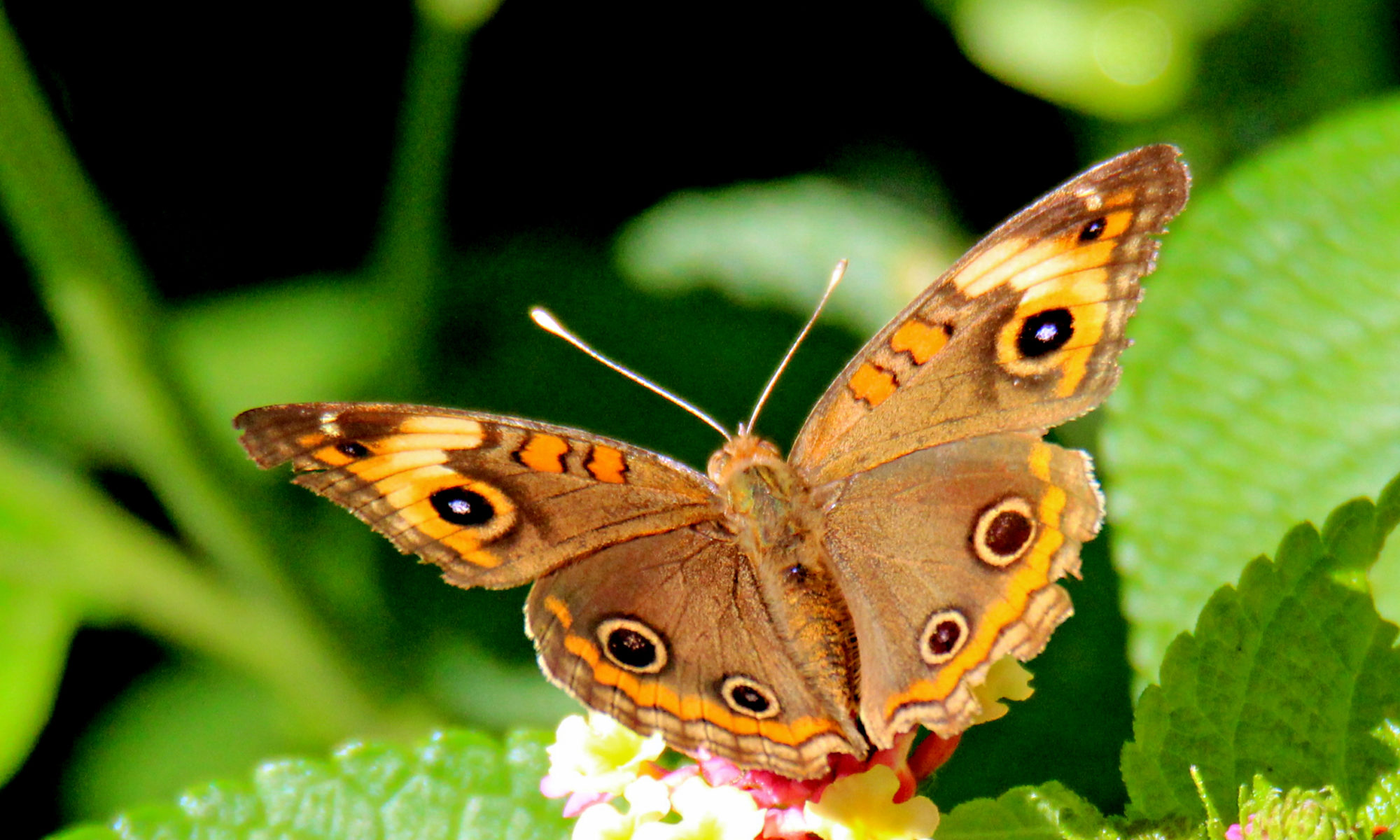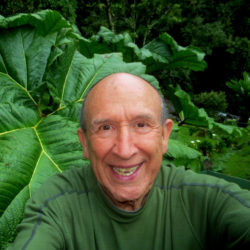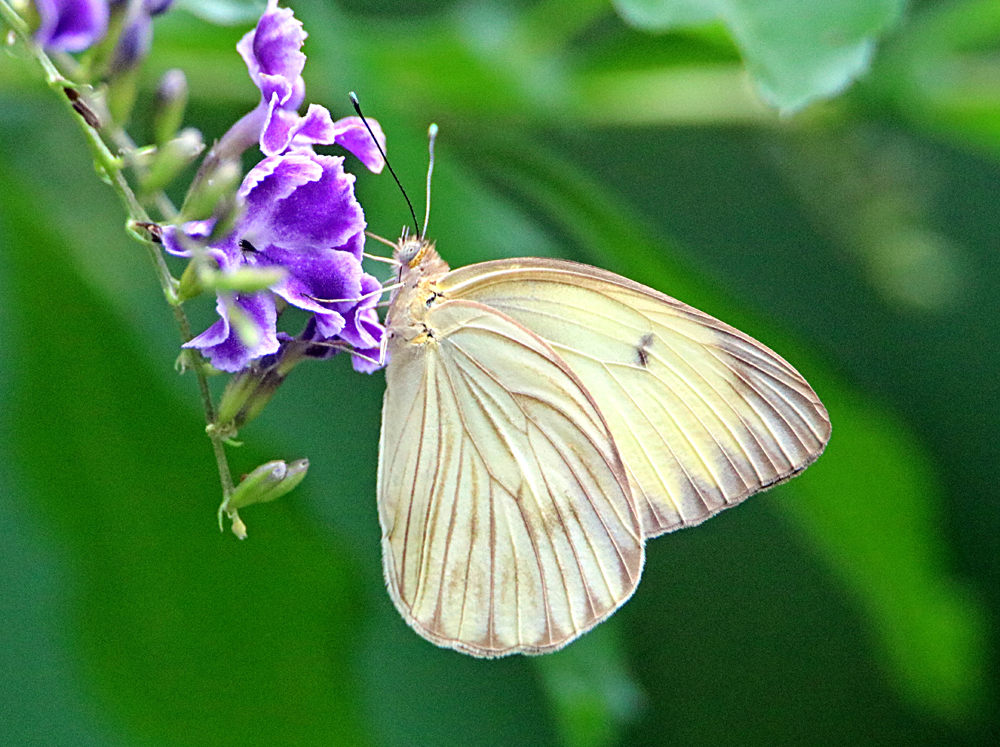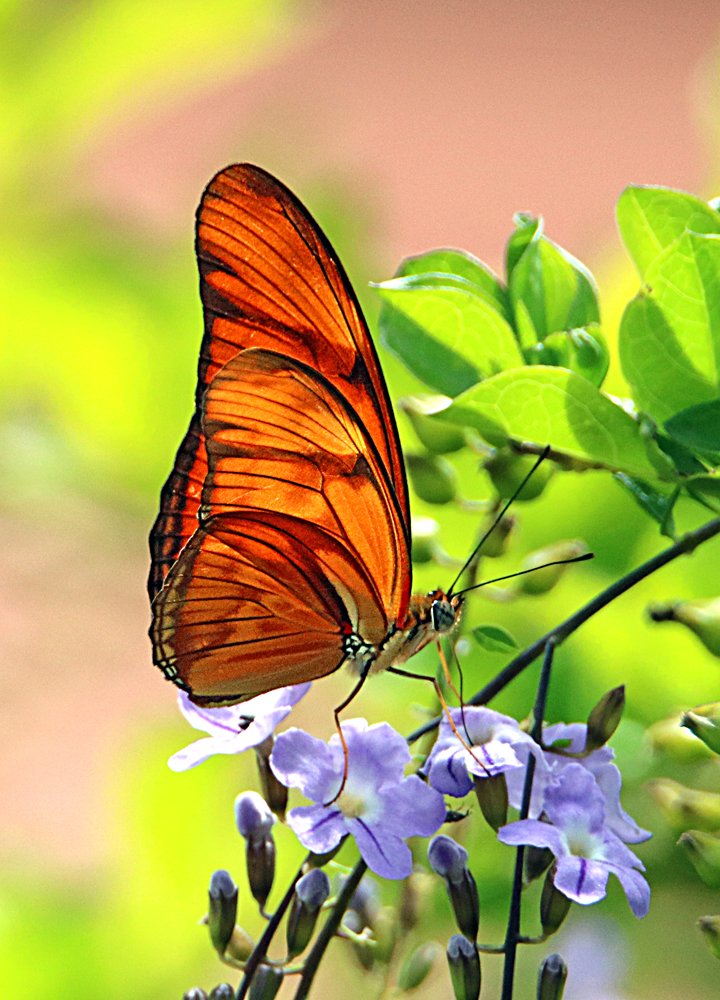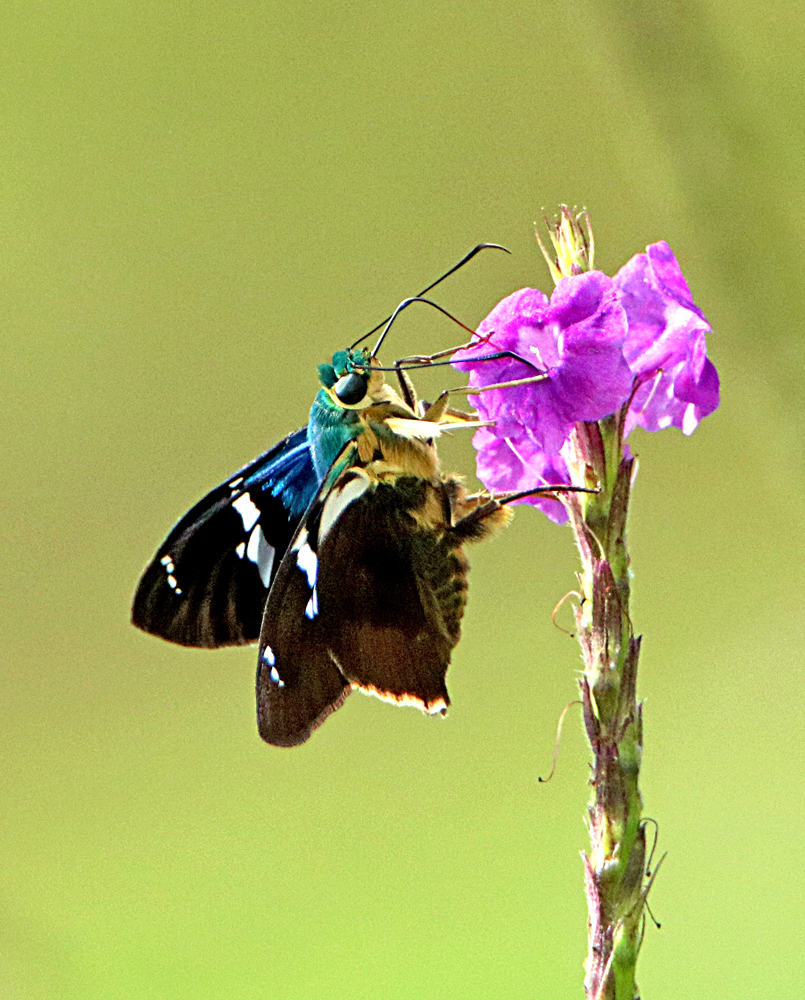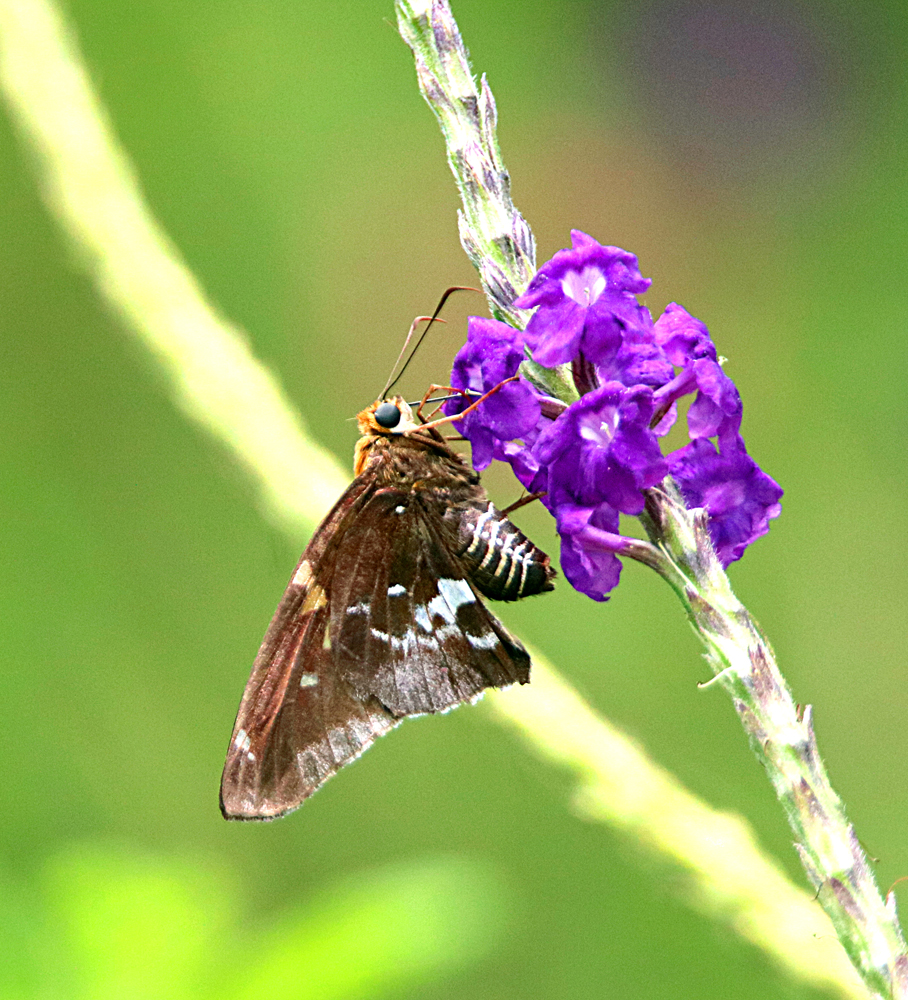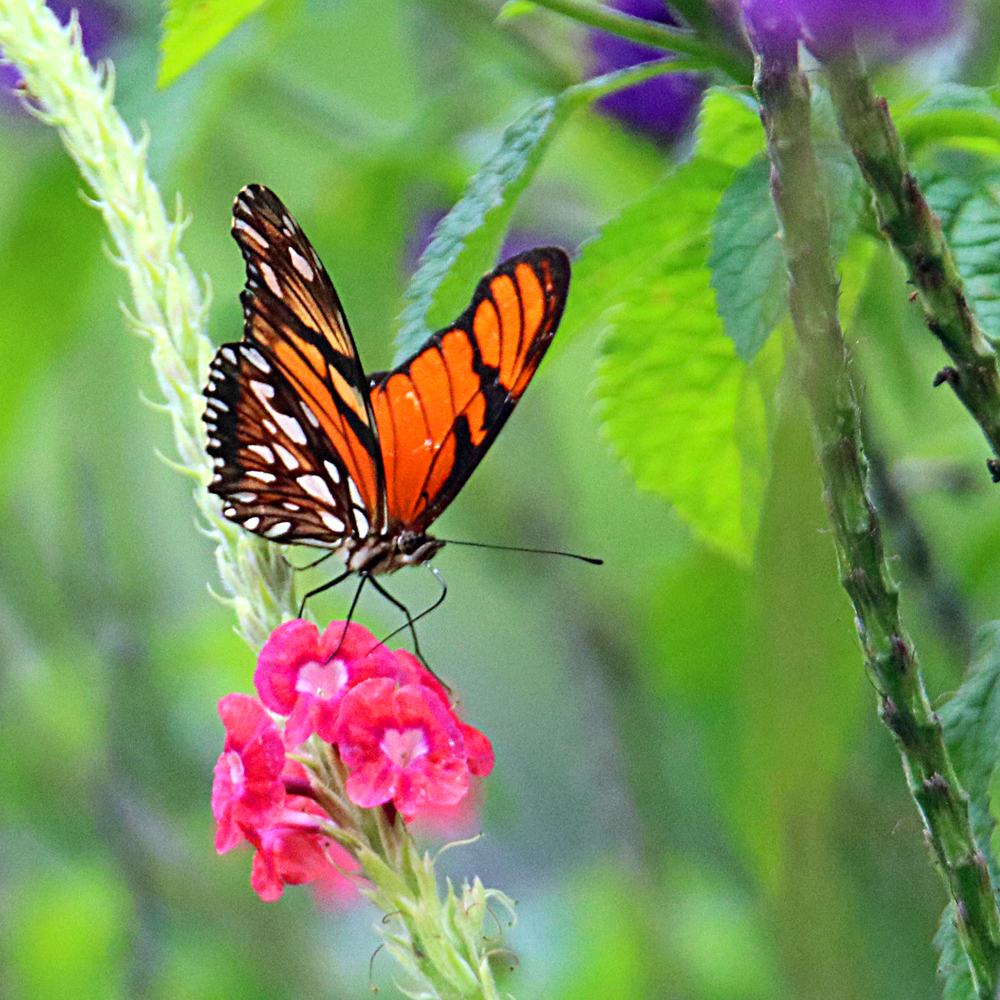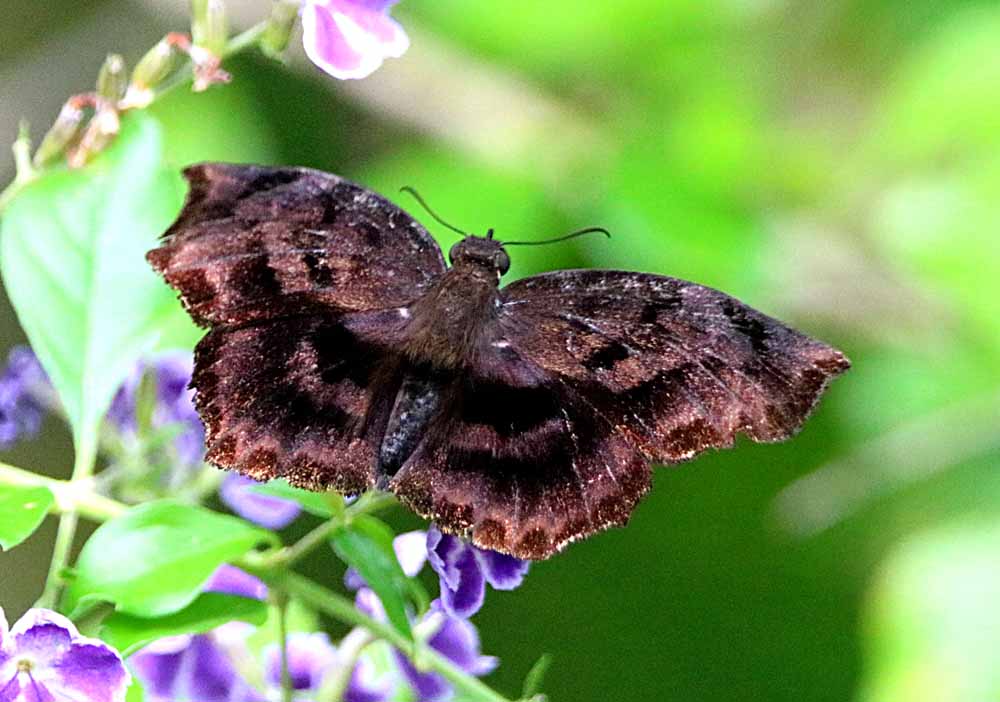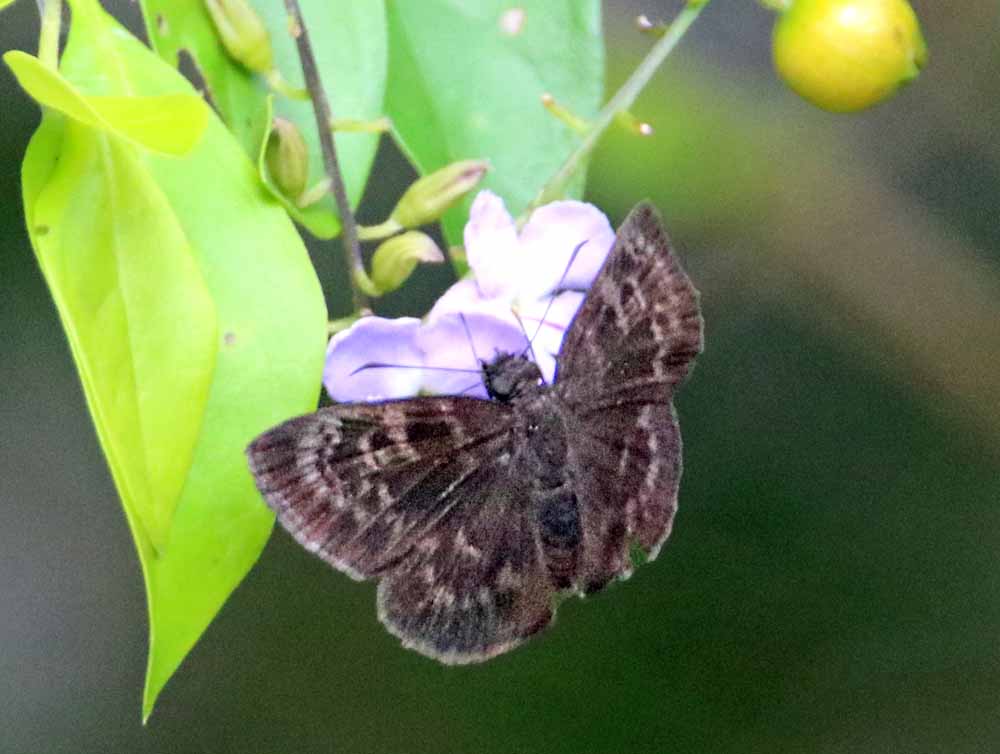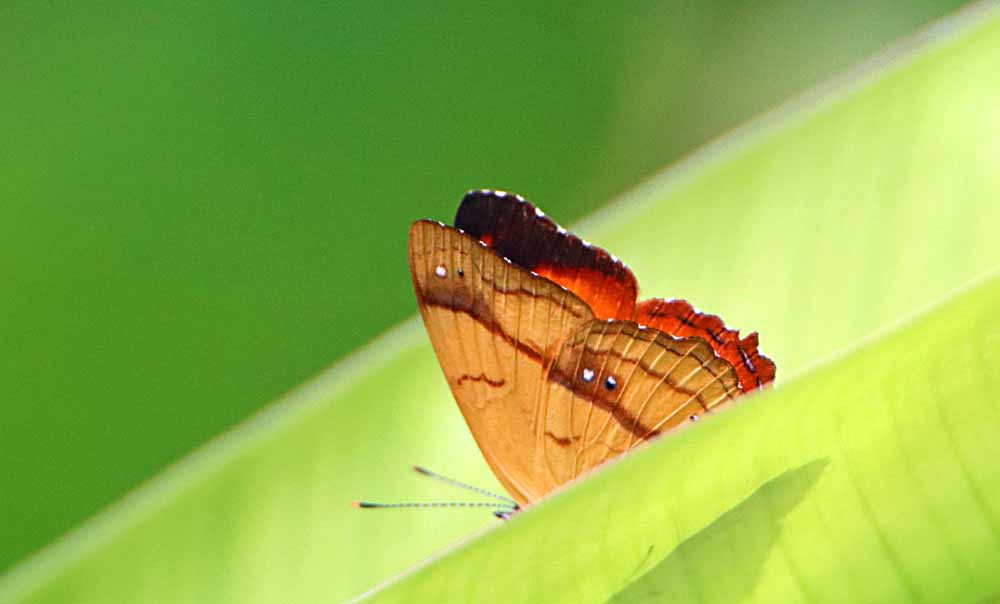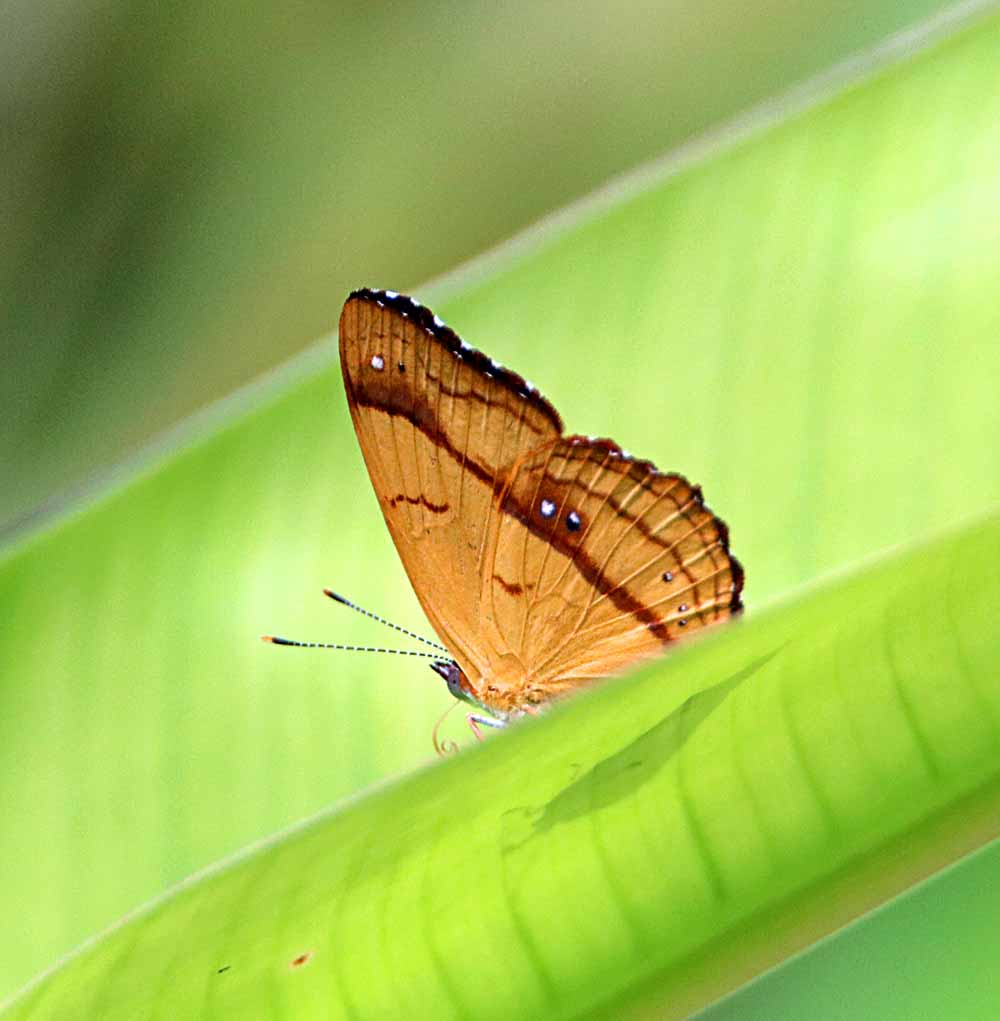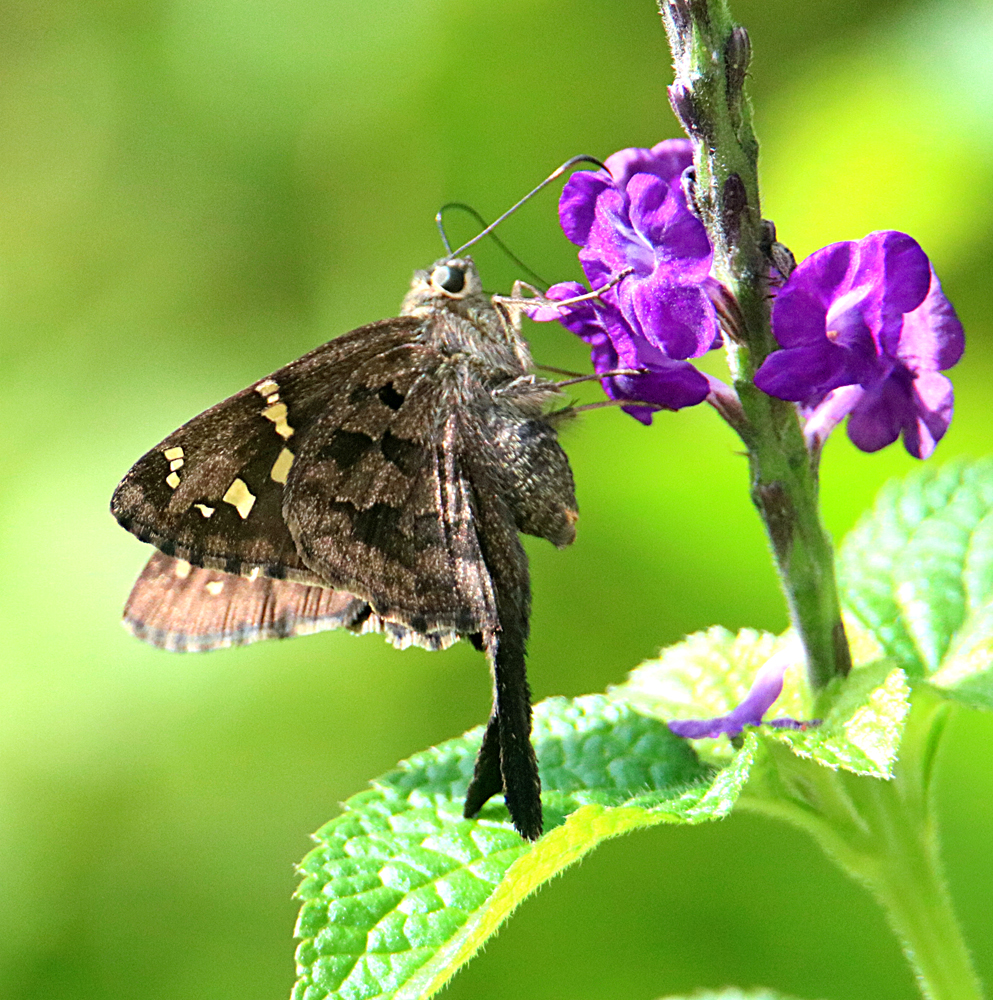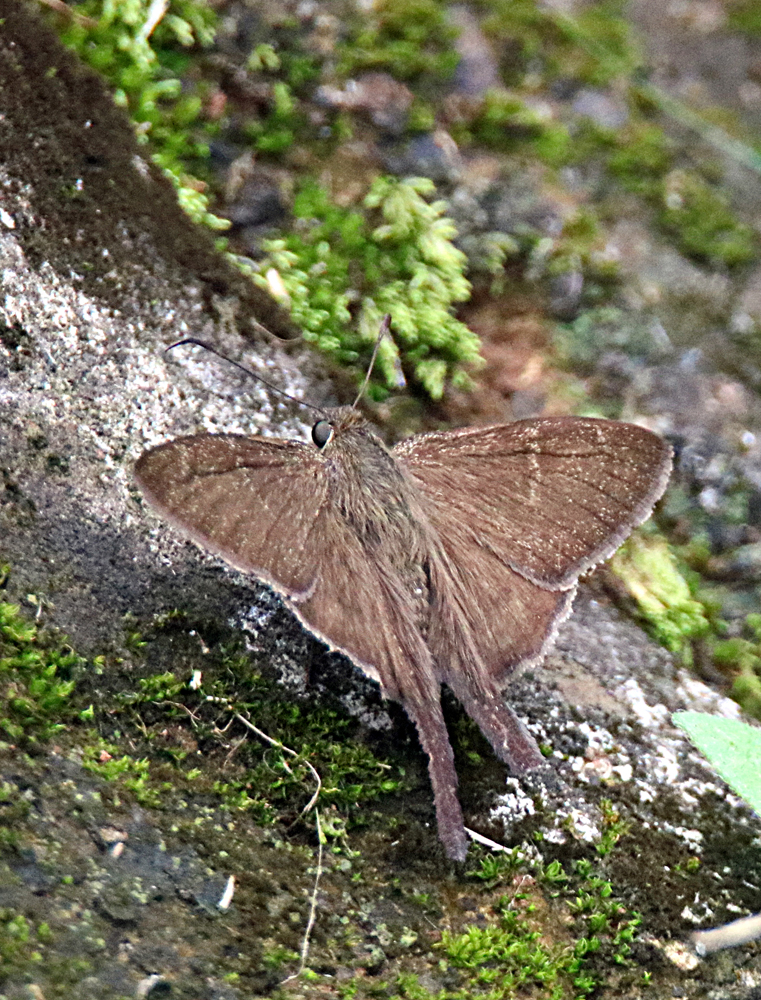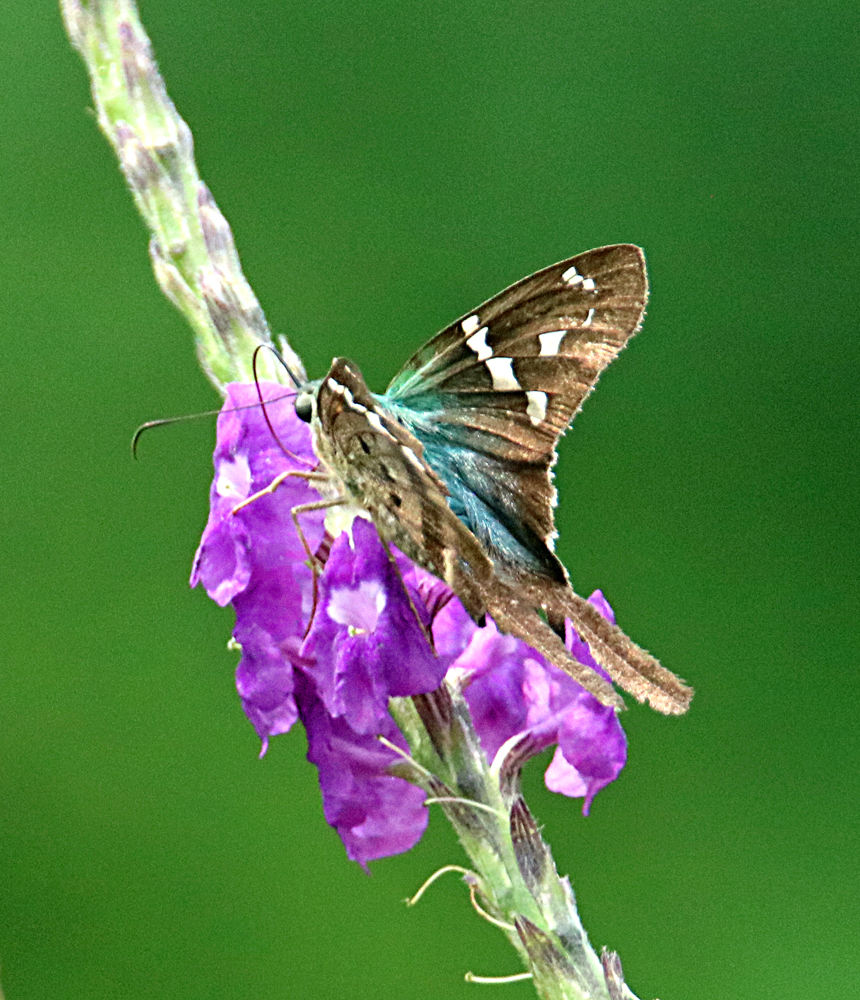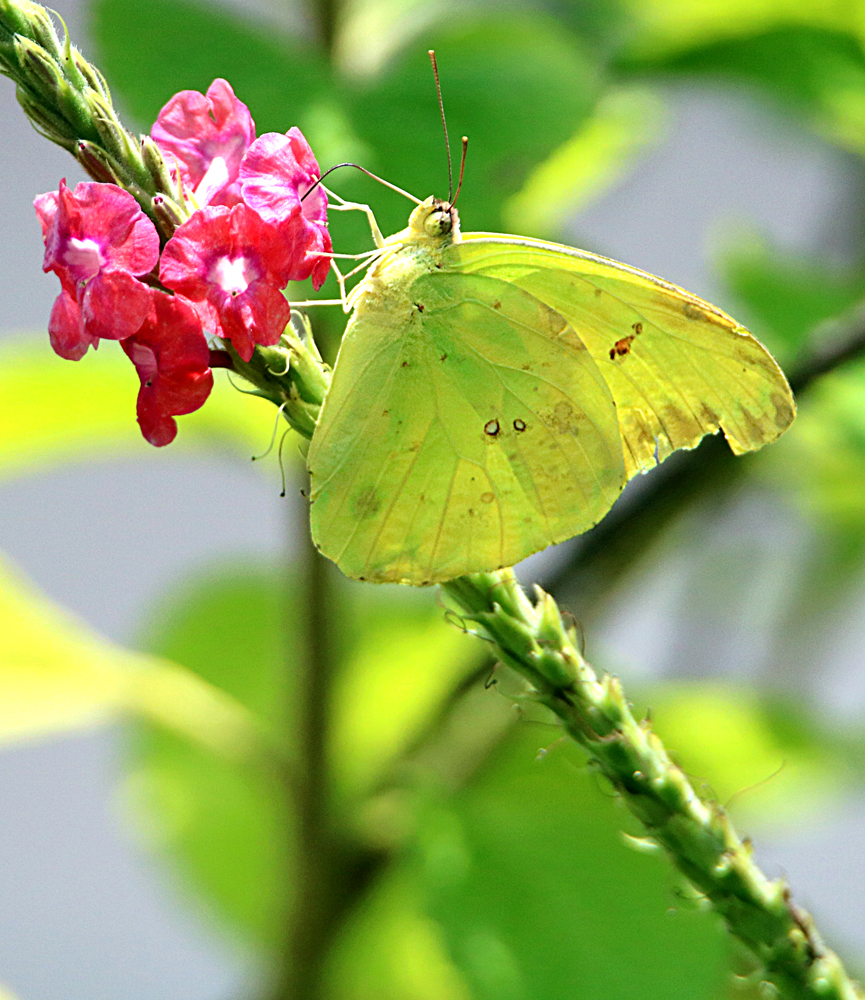All of the Whites, Yellows & Sulphur butterflies are in the Pieridae Family (linked to my gallery) where I’ve collected 32 species and one of the most understated of them all is this Statira Sulphur, Aphrissa statira (gallery linked) with a non-descript off-white color, but bright yellow shoulders and the scattered brown spots and upper brown border showing through on the folded wings. And I like his simplicity. Here’s one shot from my garden the other day and there are a lot more in the gallery including some from the Caribe that are a stronger yellow.
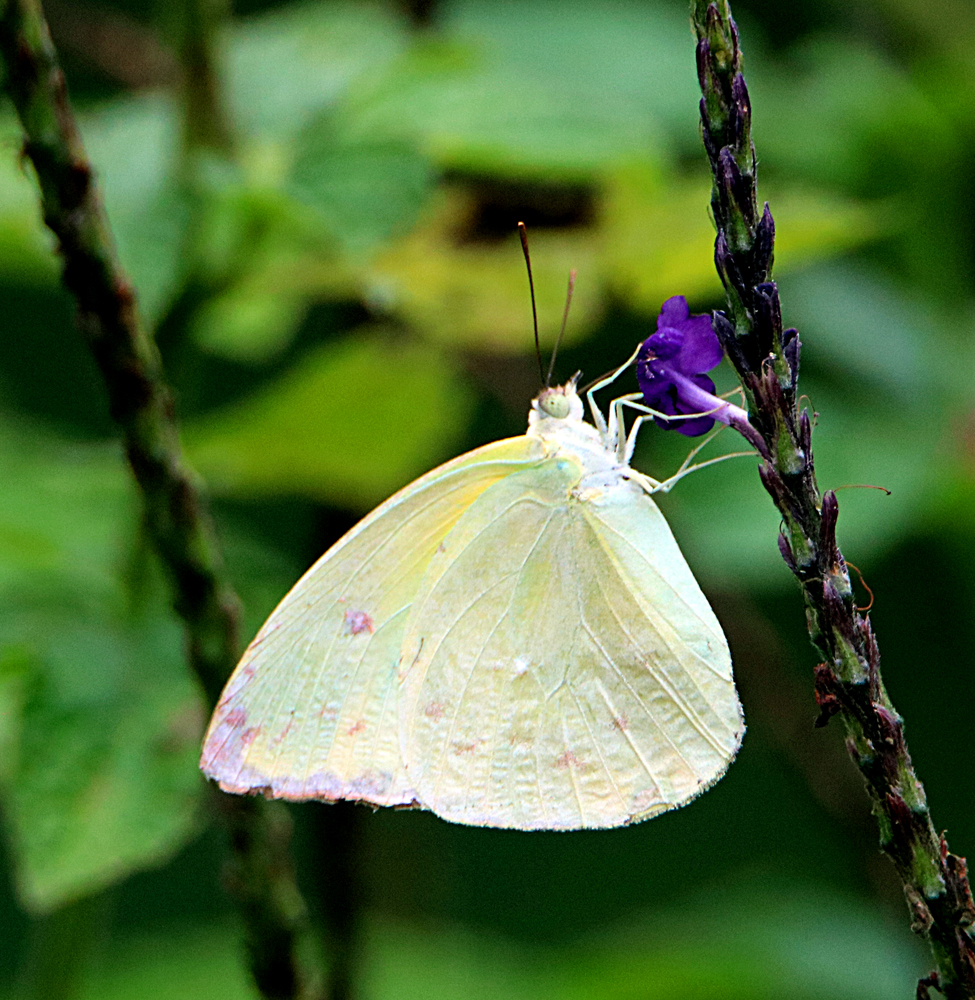
¡Pura Vida!
About My Usual September Caribe Trip
It was first scheduled for earlier in September and a doctor’s appointment moved it to this week which had to be changed again because the government is remodeling the Limón Airport (I prefer to fly there now.) with a longer runway for bigger planes and international flights plus a remodeled terminal building, meaning the airport is closed through the 20th of September for construction work. 🙁
So I rescheduled my Hotel Banana Azul visit again, this time to October 1-6. Hopefully the airport will be ready! 🙂 And hopefully there will still be butterflies on the beach road in October like there has always been in September. I’ll be reporting from there the first week of October to let you know. Now I continue to report the larger number than usual in my garden in Atenas this year! 🙂
